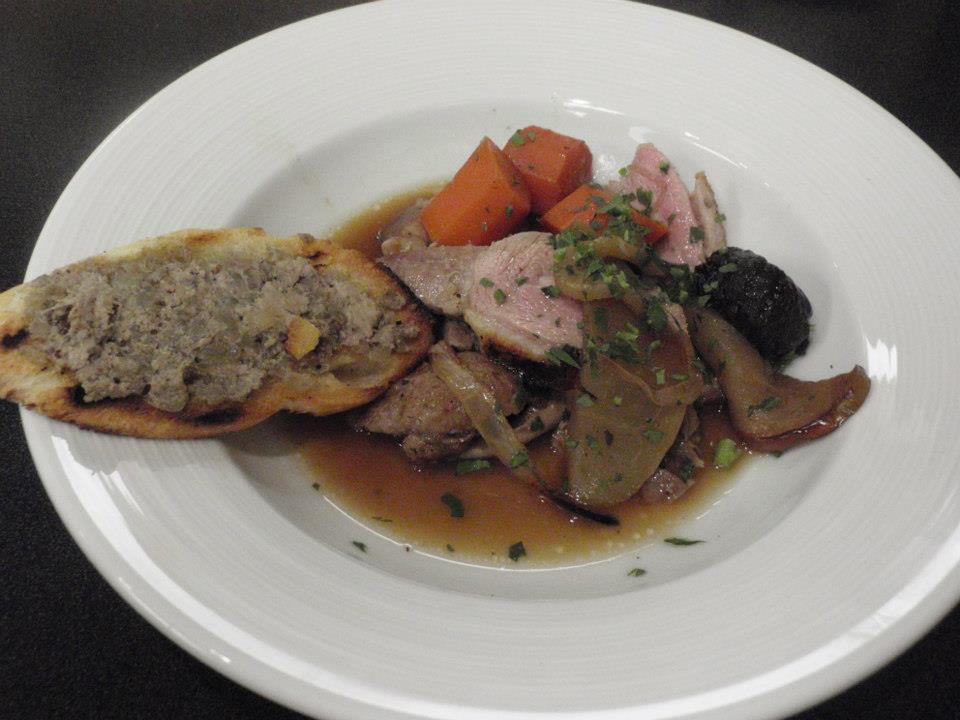
Wild Game for dinner, photo © Cecilia Nasti
This is passport to Texas
We’re in the thick of fall hunting season, which means venison is on the menu. When cooking this perfect protein, it’s important to use the correct method to achieve the best flavor and texture.
Either you’re going to cook it a very short amount of time or not even cook it at all—raw in the form of tartar—which is excellent. Or you’re going to cook it where it’s just got a nice brow crust on the outside, and it’s still rare or medium rare on the inside; or, you’re going to cook it at a very slow rate for a long time like a braise or a very slow roast.
Jesse Griffiths is a hunter and professional chef in Austin. He says slow cooking allows the fats, sinews and collagen to melt, which makes the meat juicy and tender.
So, braising is a good way, because it’s a moist cooking. You brown it off first, develop flavor, and then cook it in liquid. And so that keeps the moisture in there. Then cook it gently—don’t boil it—you have to get a nice simmer. Keep it in the oven. The secret is just to have patience.
Chef Griffiths also does all his own processing, because he uses all parts of the animal, including liver, kidneys, bones and more.
I think it’s just a shame to waste anything off of any animal. Especially when we put so much work into hunting.
We have a venison recipe from Chef Griffiths at passporttotexas.org.
That’s our show…For Texas Parks and Wildlife…I’m Cecilia Nasti.
_____________________________________________________
Stuffed Venison Flank
Recipe by Jessee Griffiths of Dai Due Supper Club, Austin, Texas
Tomatoes can be added to this dish to make a tomato-based sauce instead of just stock. Dried Fruit, mushrooms or other vegetables such as carrots or parsnips can be added to the braise as well.
Ingredients
2 boneless venison flanks
salt & pepper to taste
1 pound ground pork
chopped fresh herbs like thyme, rosemary & sage
1 cup fresh breadcrumbs
2 eggs beaten
olive oil
2 onions, sluiced thin
1 pint tomatoes (optional)
wine (optional)
stock or water, as needed.
Preparation
Preheat oven to 350 degrees
Lay the flanks in front of you with the grain running horizontally. Season them with salt & pepper. Mix the ground pork, herbs, breadcrumbs and eggs in a small bowl and season with salt & pepper. Spread this mix onto the flanks and roll the flanks around the stuffing. Tie the flanks with kitchen twine.
In a large pan (big enough to accommodate the rolled, stuffed flanks), heat a good amount of olive oil and patiently brown the stuffed flanks until browned. Remove the flanks to an ovenproof casserole. Add the onions (as well as other optional vegetables like carrots, celery, parsnips, garlic, ginger, etc.) to the pan in which you browned the flanks and cook until softened. Add the optional wine / or tomatoes and cook until reduced by half. Pour over the flanks and add enough water or stock to come halfway up the meat. Bring to a boil and place int eh oven, uncovered. Braise, turning the flanks every 30 minutes, for 2 to 5 hours, or until tender (this will depend on the animal). Add more liquid as necessary. Taste the finished sauce and season as needed with salt and pepper. Allow to rest for a few minutes or cool overnight; curt away twine, and slice thickly against the grain.



 Passport to Texas is a
Passport to Texas is a  Passport to Texas is made available by:
Passport to Texas is made available by: